Combustion Performance and Emission Characteristics of a Diesel Engine Using a Water-Emulsified Heavy Fuel Oil and Light Diesel Blend
Abstract
:1. Introduction
2. Experimental Setup and Procedure
| Items | Unit | Parameters |
|---|---|---|
| Cylinder bore × stroke | mm | 135 × 140 |
| Compression ratio | - | 17 |
| Rated rotation speed | r/min | 1500 |
| Rated power | kW | 14.7 |
| Fuel injection pressure | MPa | 70 |
| Fuel injection timing | °CA BTDC | 12 |
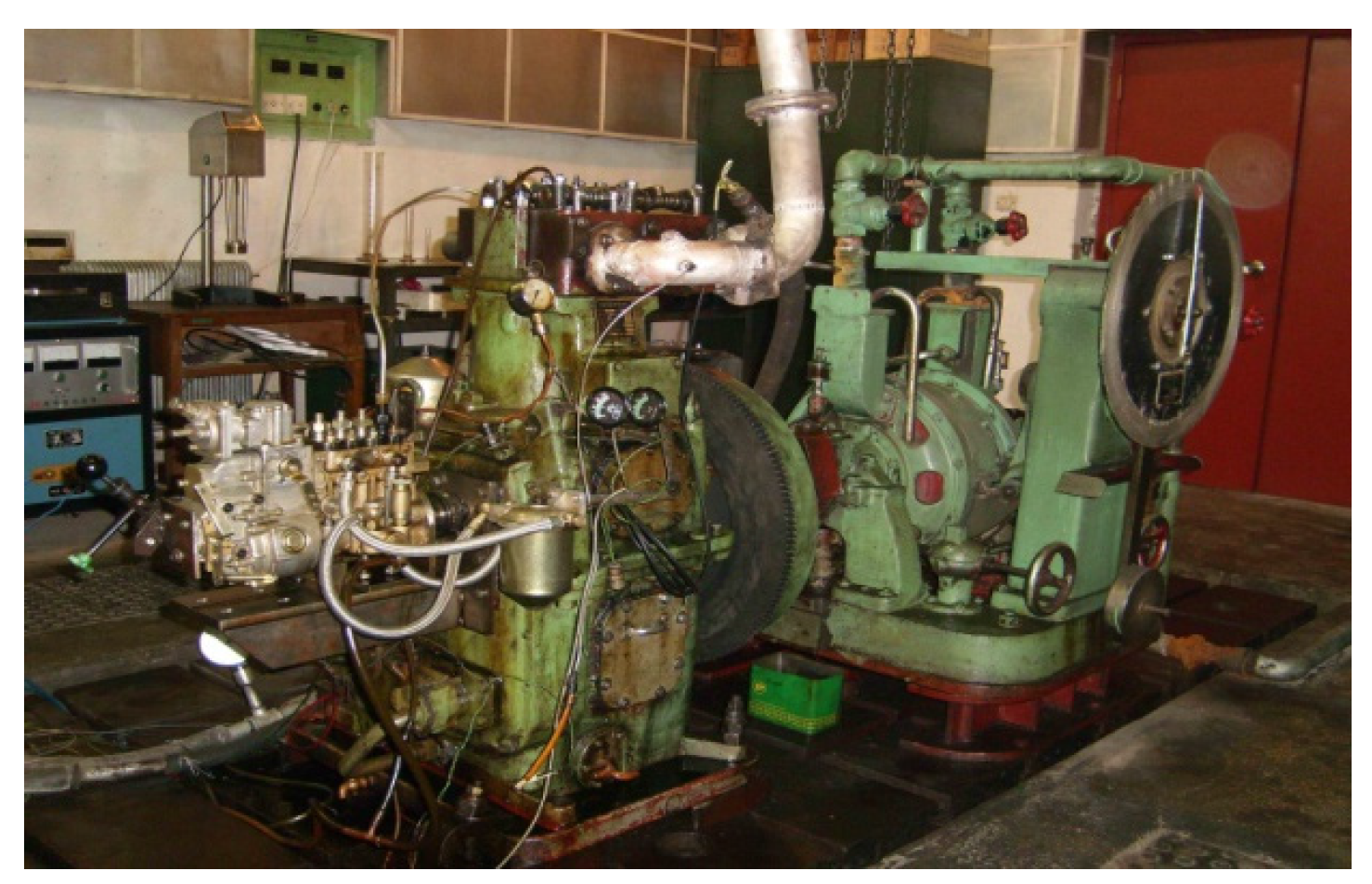
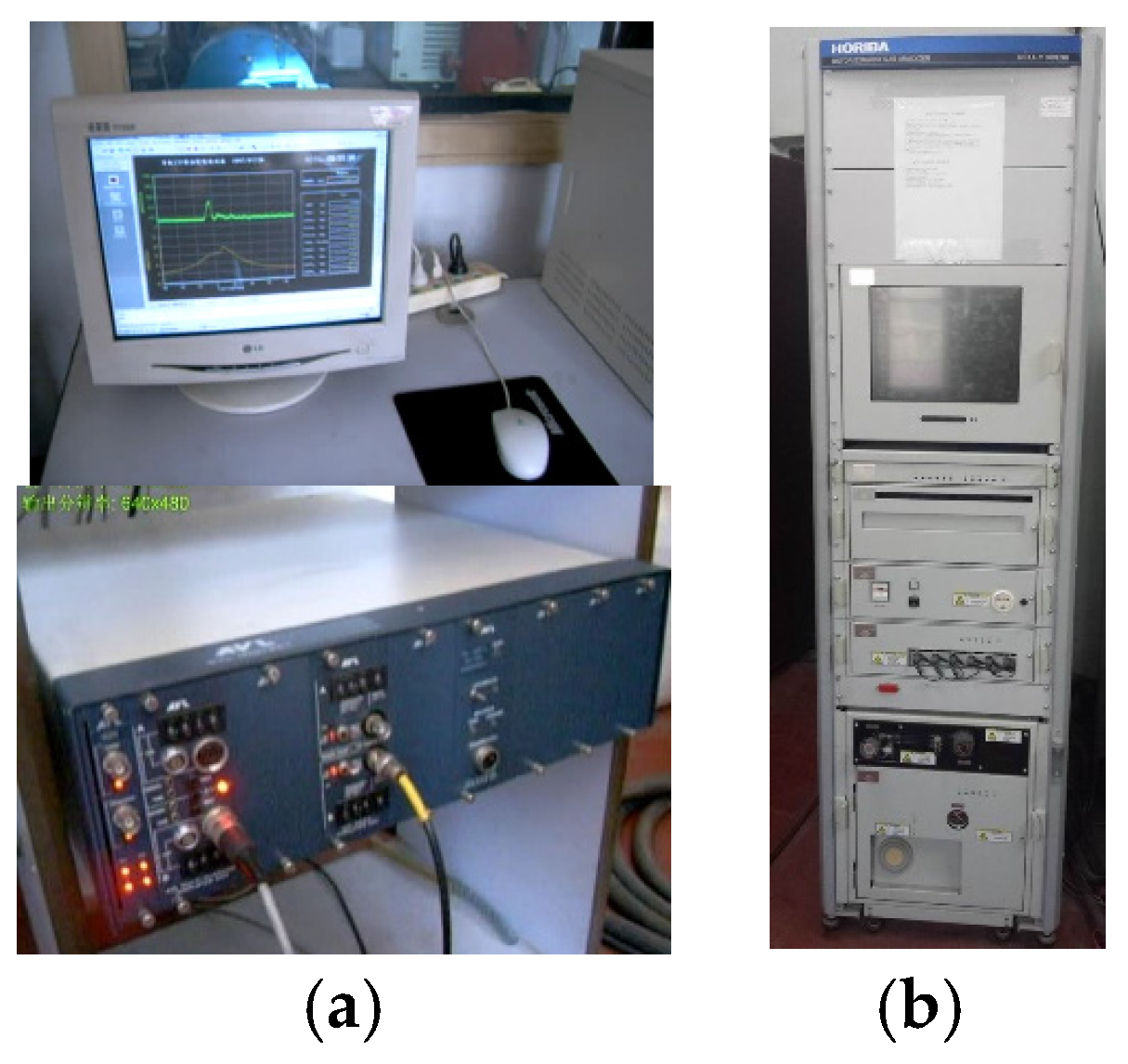
| Measurement | Range | Accuracy |
|---|---|---|
| NOx | 0–10/50/100/200/500/1000/2000/5000/10,000 ppm | ≤0.5% FS |
| CO (low) | 0–50/200/1000/5000 ppm | ≤0.5% FS |
| CO (high) | 0–0.5/1/5/10 vol % | ≤0.5% FS |
| HC | 0–10/100/200/500/1000/2000/5000/10,000/50,000 ppmC | ≤0.5% FS |
| Properties | Unit | Light Diesel | HFO-L |
|---|---|---|---|
| Density at 20 °C | kg/m3 | 830 | 890 |
| Low heating value | kJ/kg | 42,500 | 42,000 |
| Kinematic viscosity at 20 °C | mm2/s | 4 | 10 |
| Cetane number | - | 48 | 45 |
| Sulphur content | - | 0.18% | 0.3% |
| Blend Number | Meaning | Density (kg/m3) |
|---|---|---|
| HFO-L | HFO-L blend without water. | 890 |
| HLW08 | HFO-L blend with 8% of water. | 899 |
| HLW10 | HFO-L blend with 10% of water. | 901 |
| HLW12 | HFO-L blend with 12% of water. | 903 |
| HLW15 | HFO-L blend with 15% of water. | 907 |
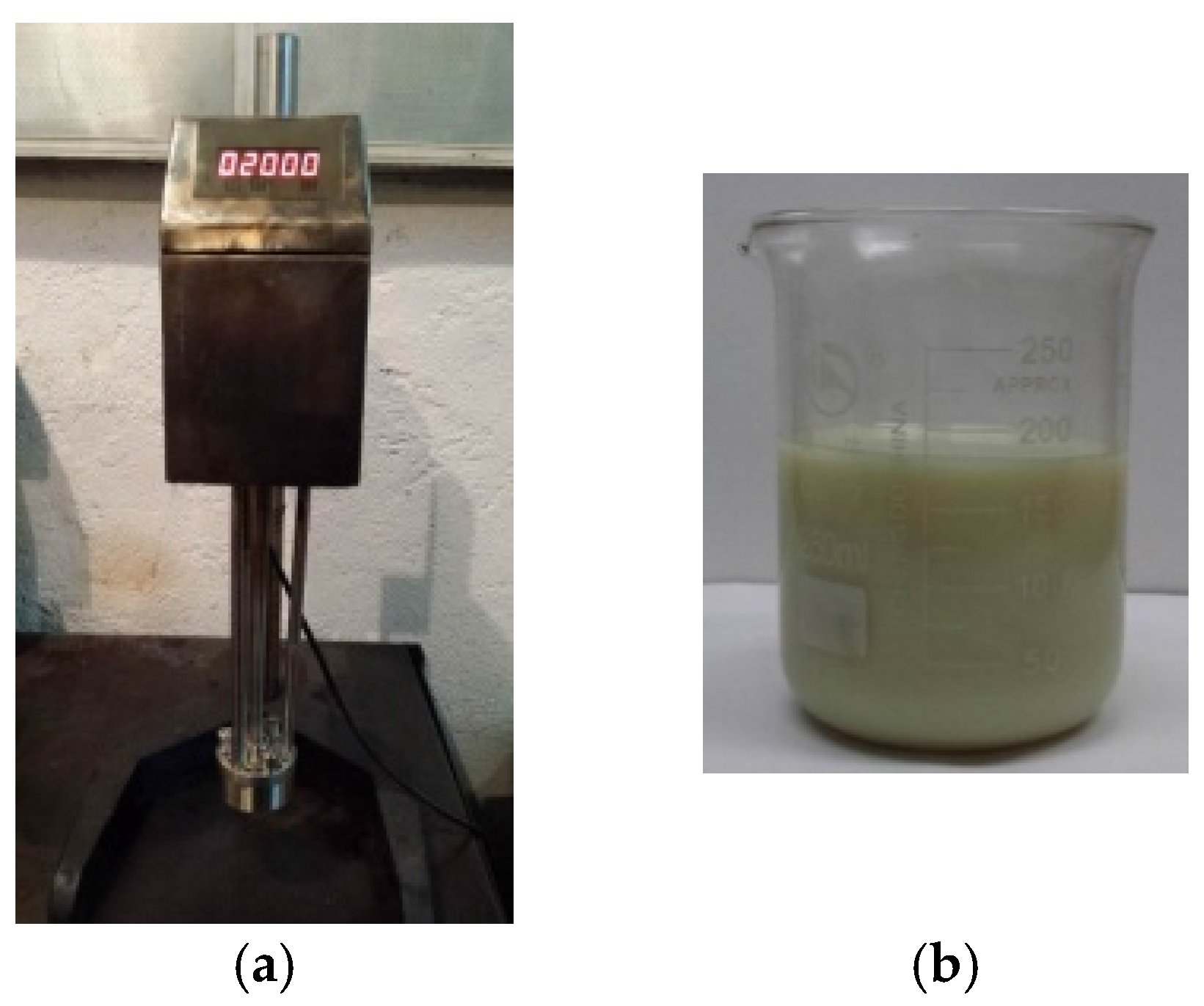
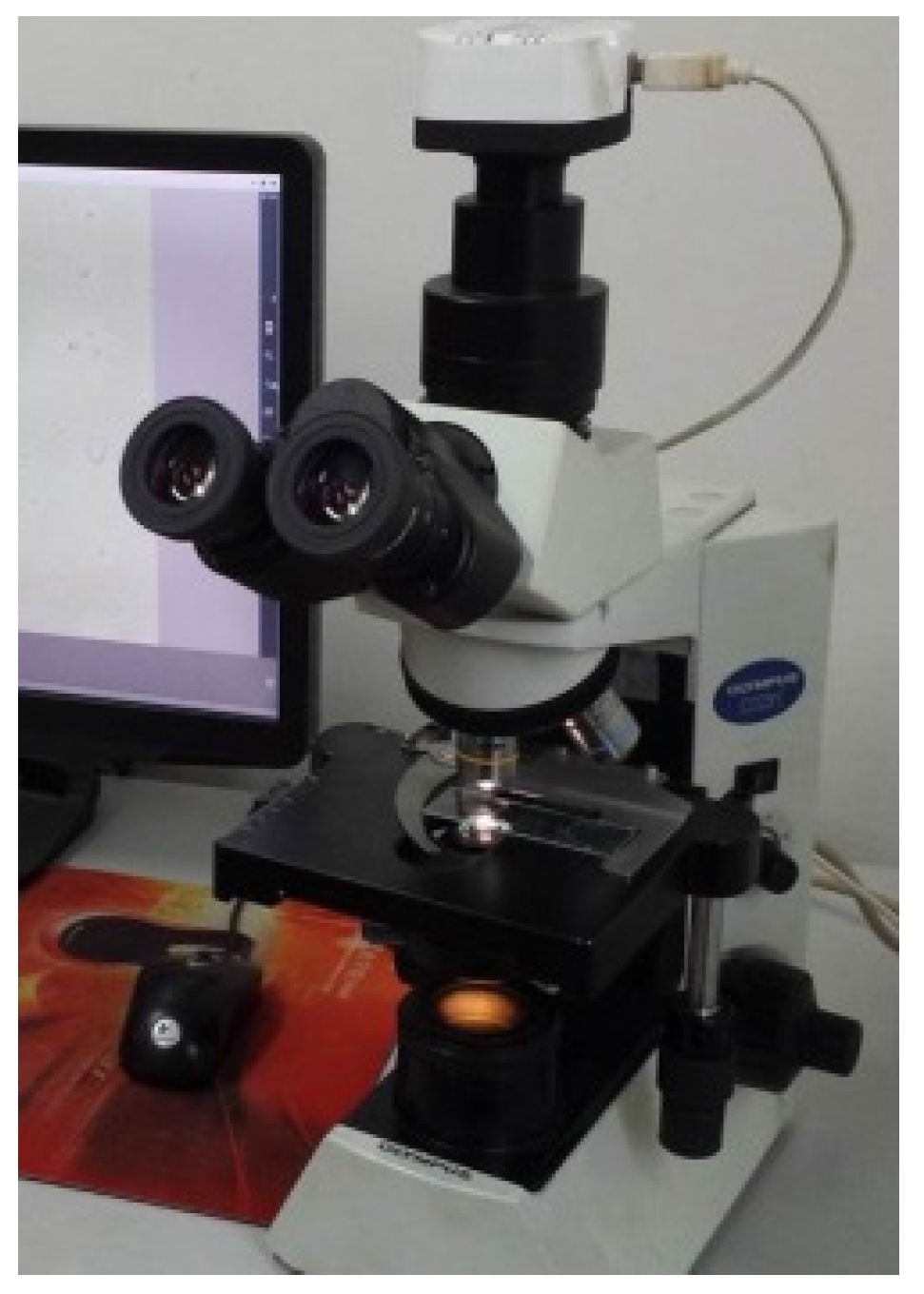
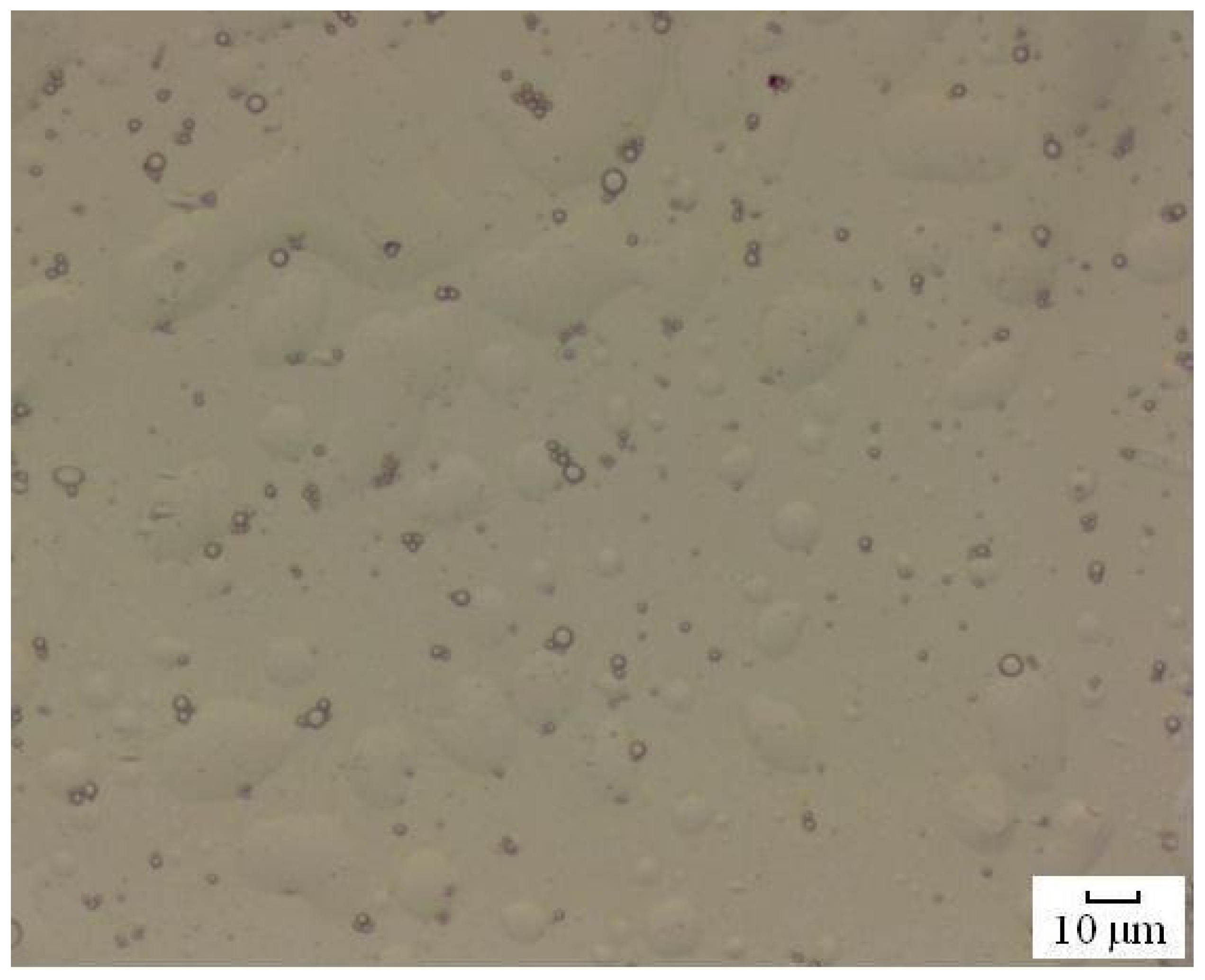
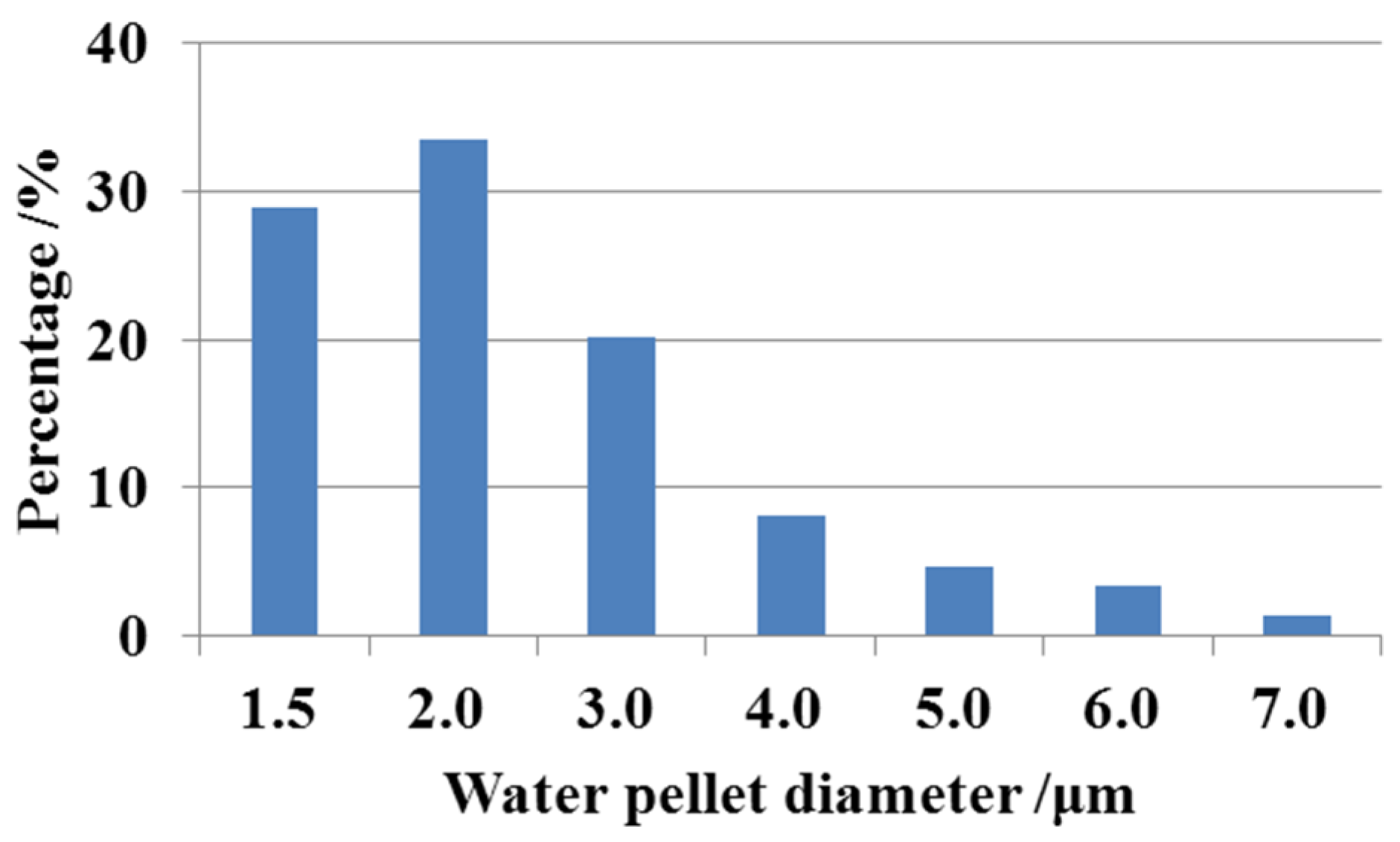
3. Results and Analysis
3.1. Effect of the Nozzle and Combustion Chamber Modification on Engine Performance


3.2. Effect of the Blend of Heavy Fuel Oil and Light Diesel Fuel Water-Emulsification on Engine Performance
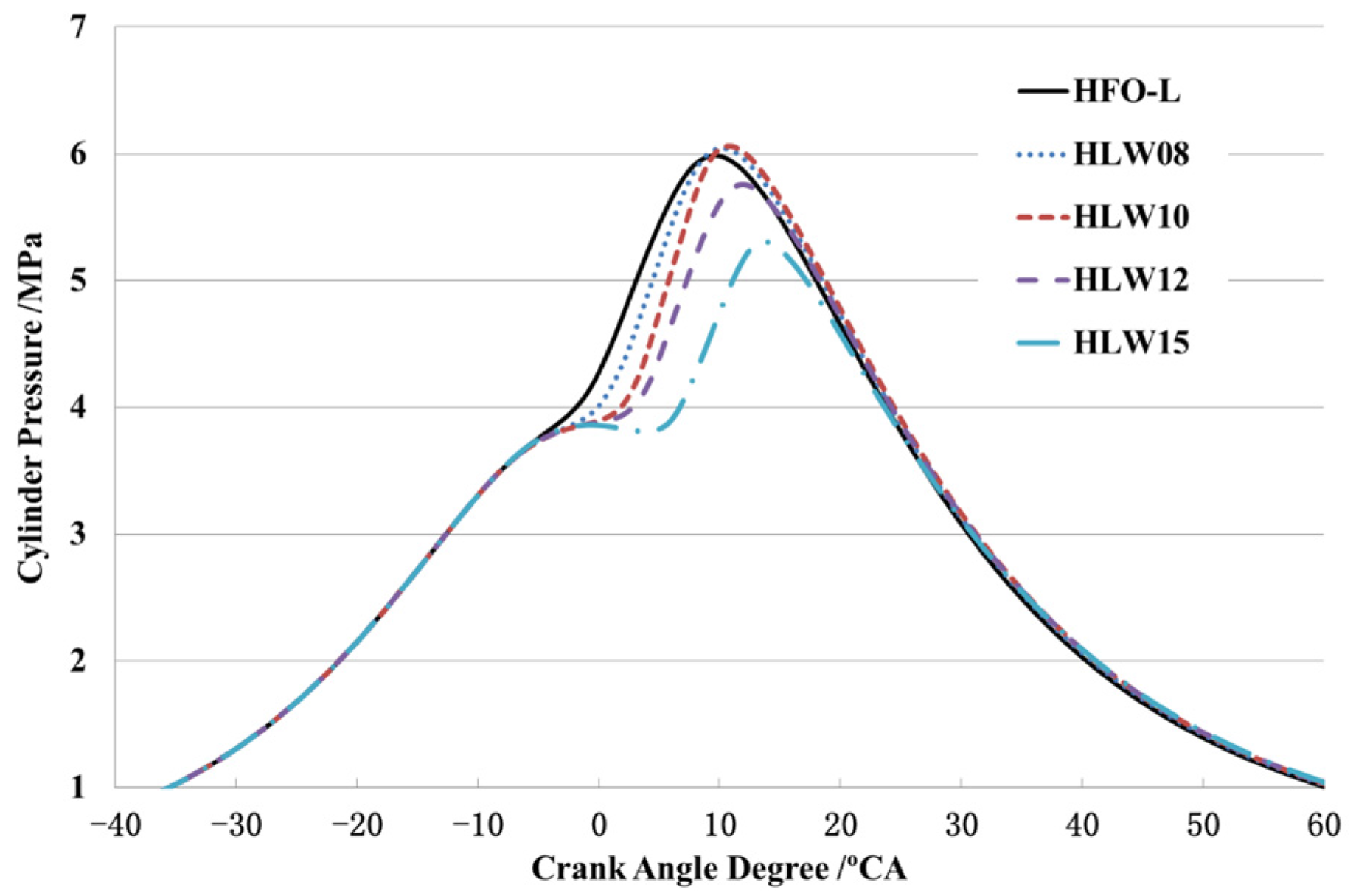
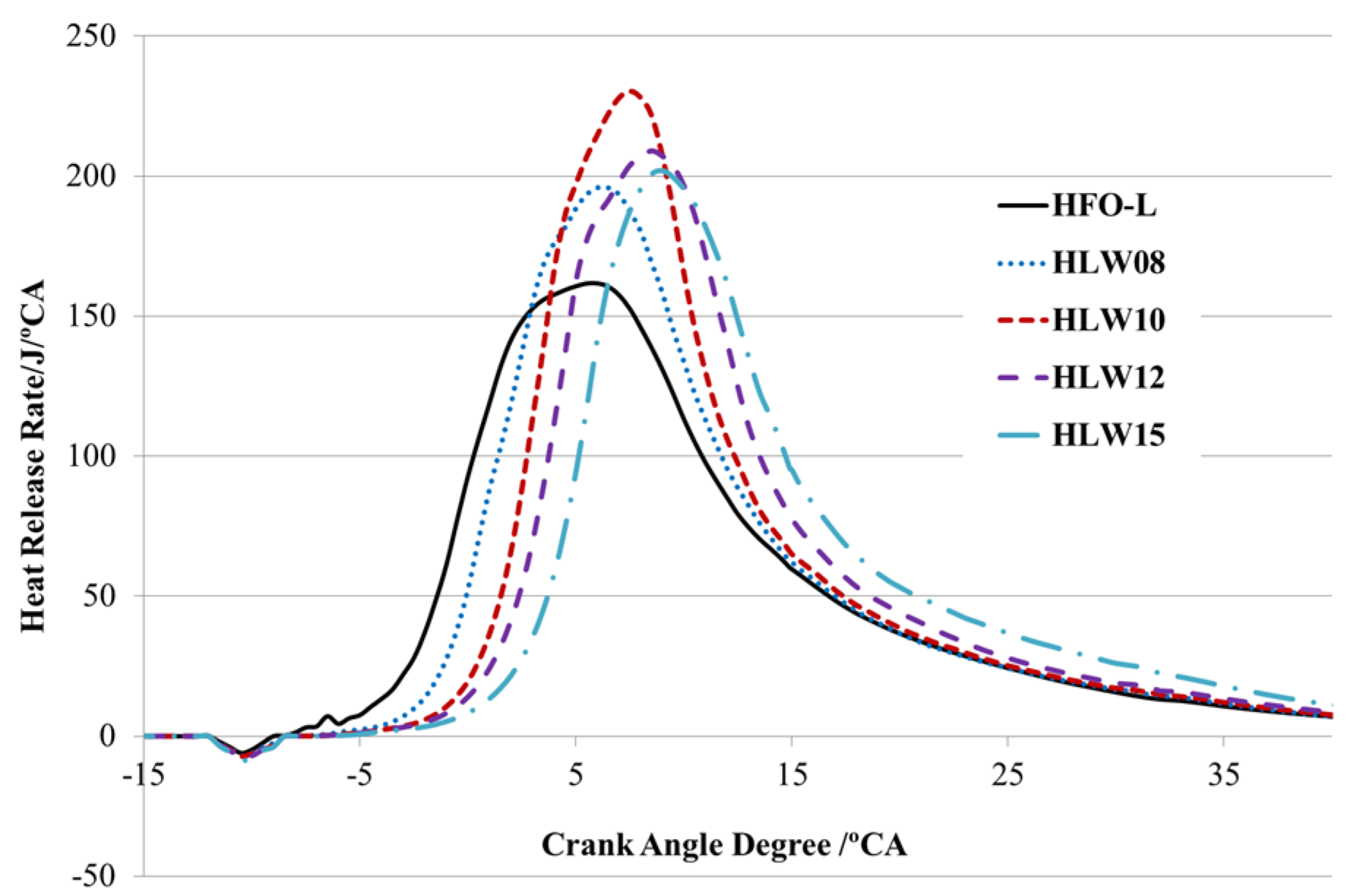
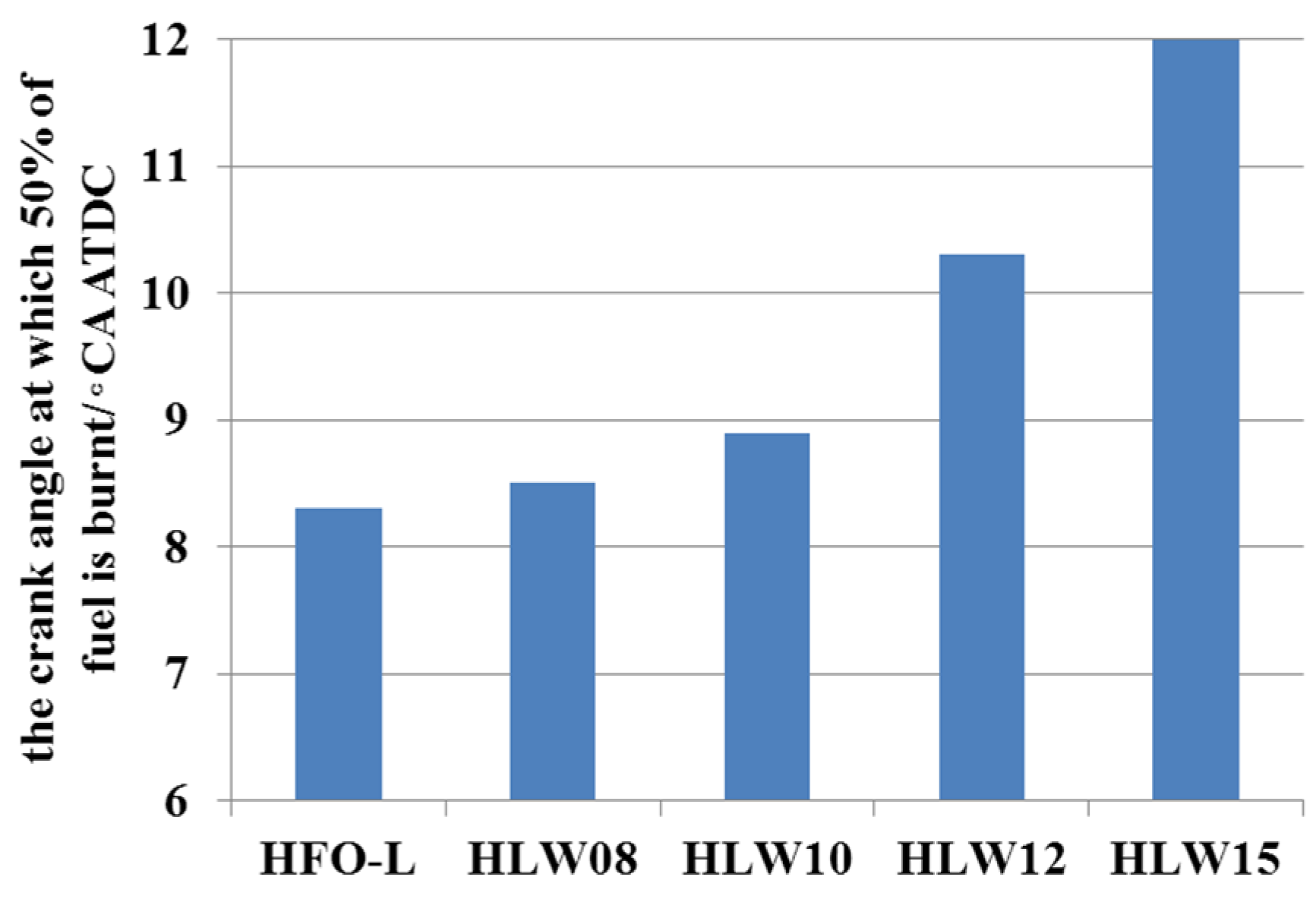
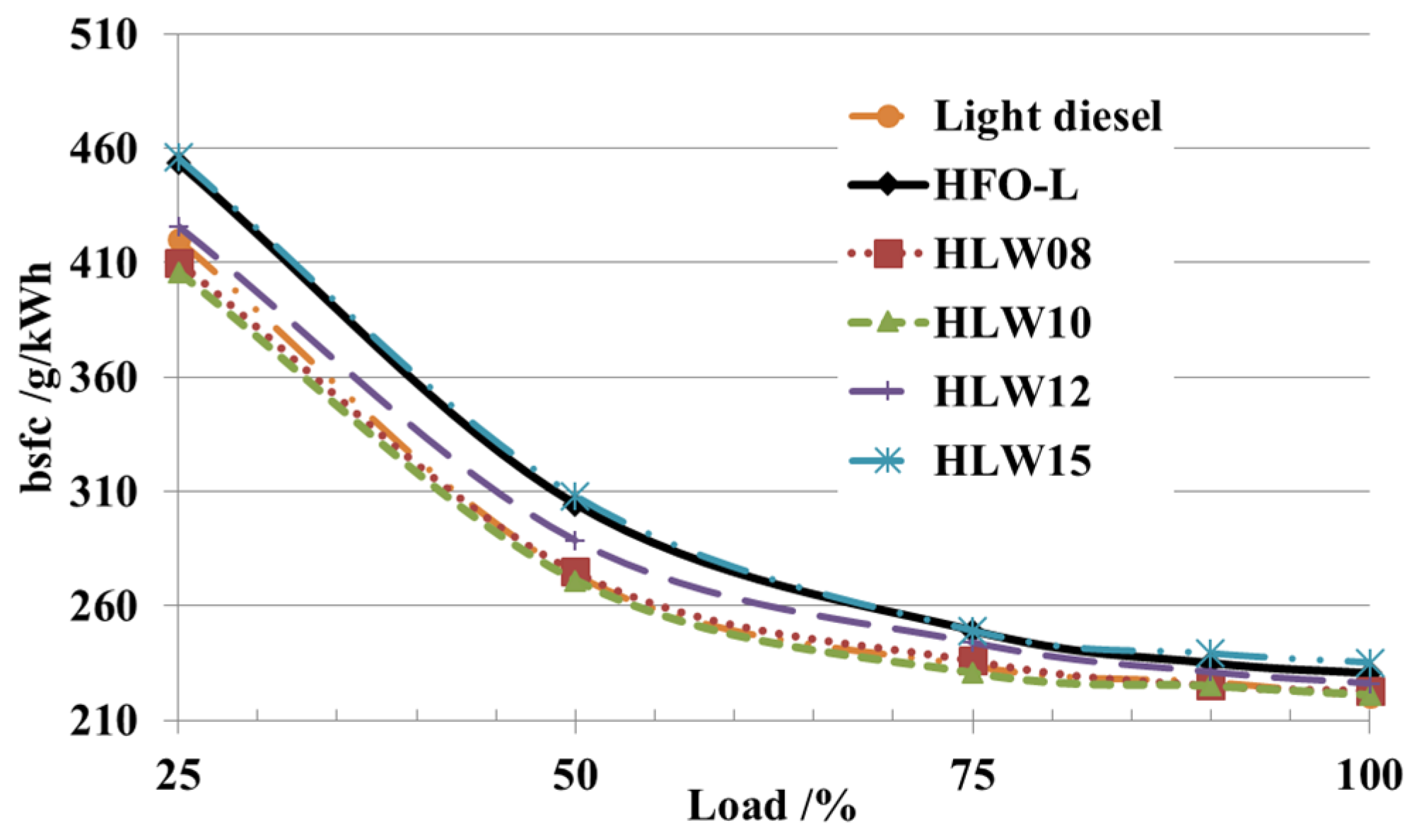
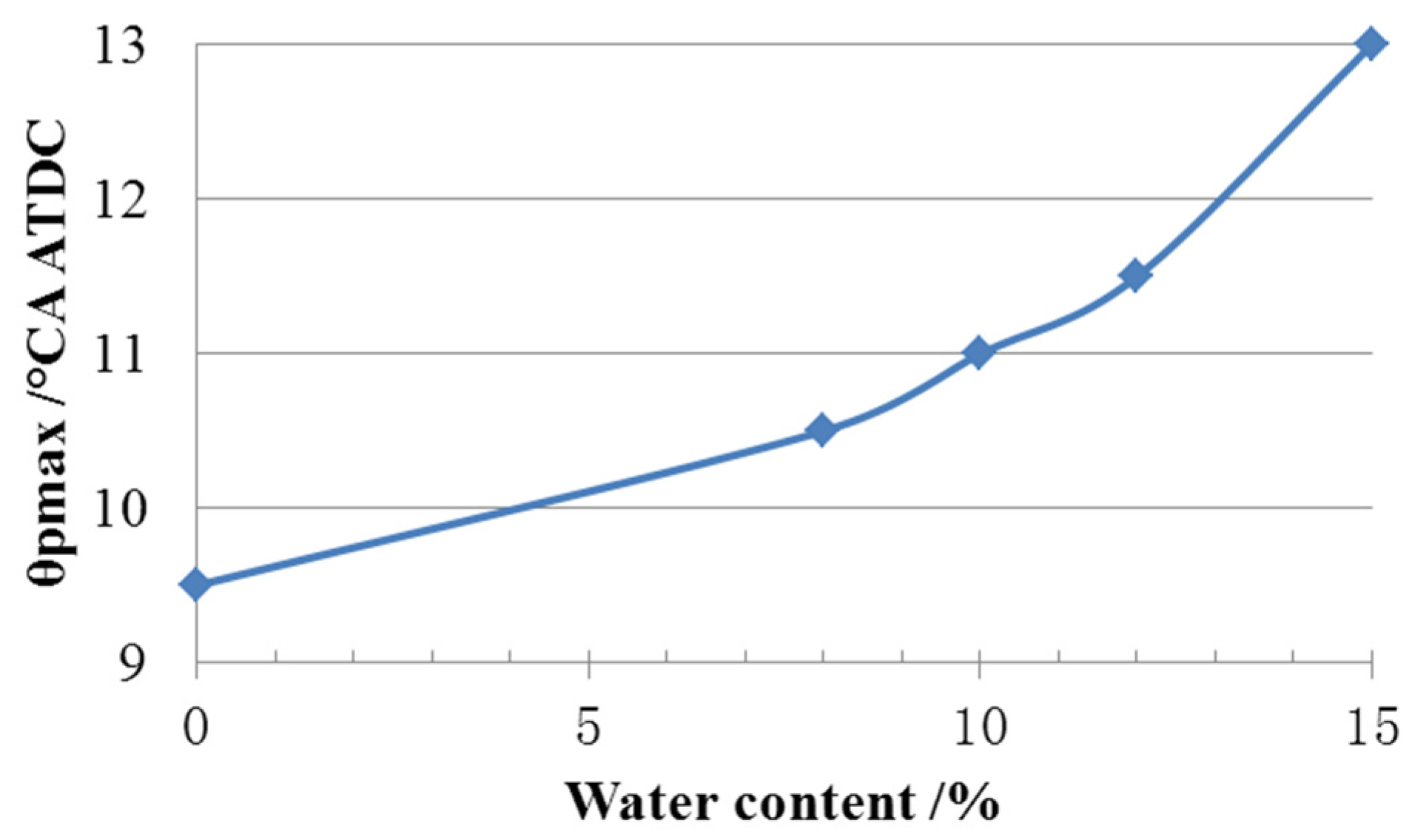
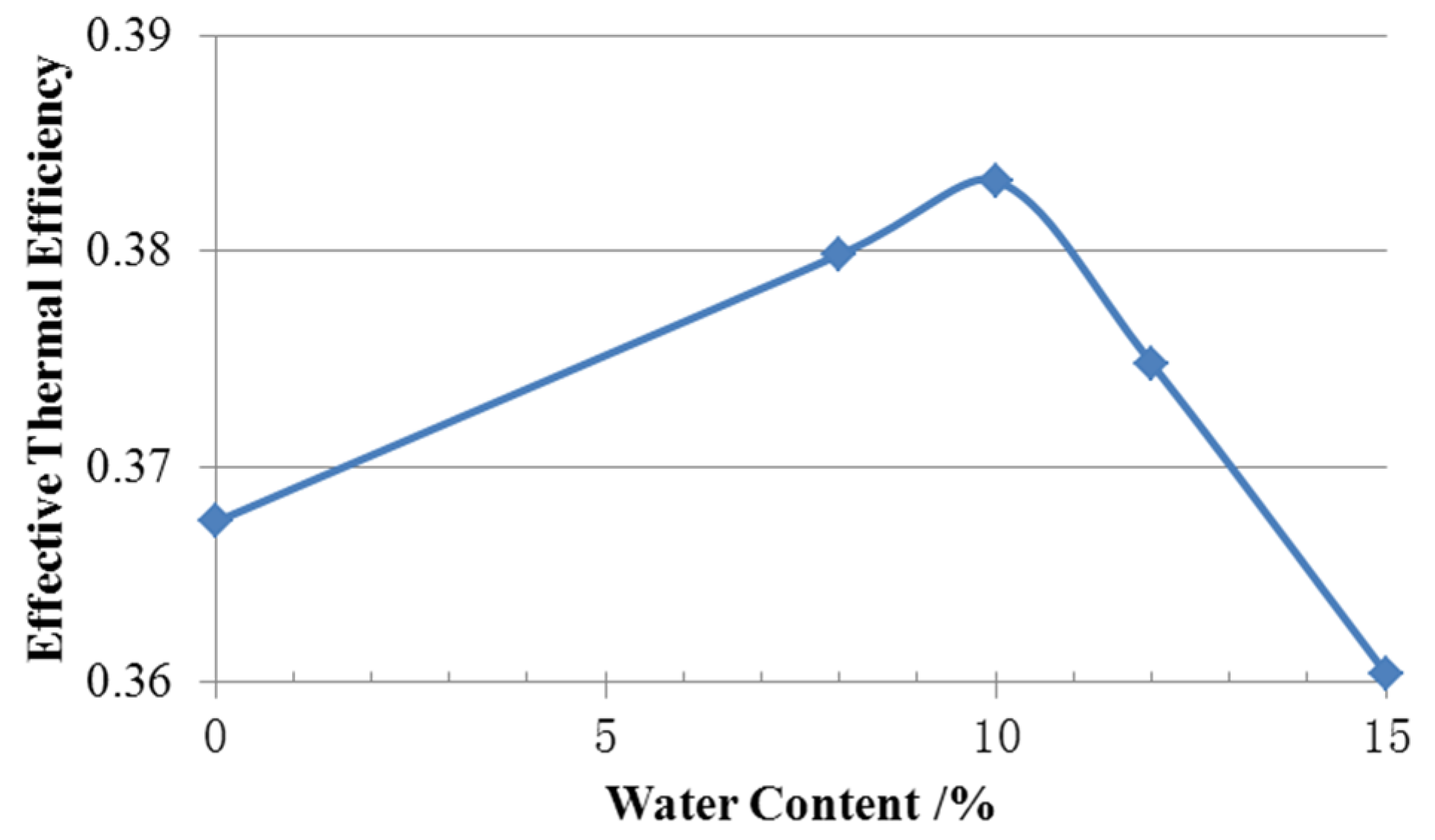
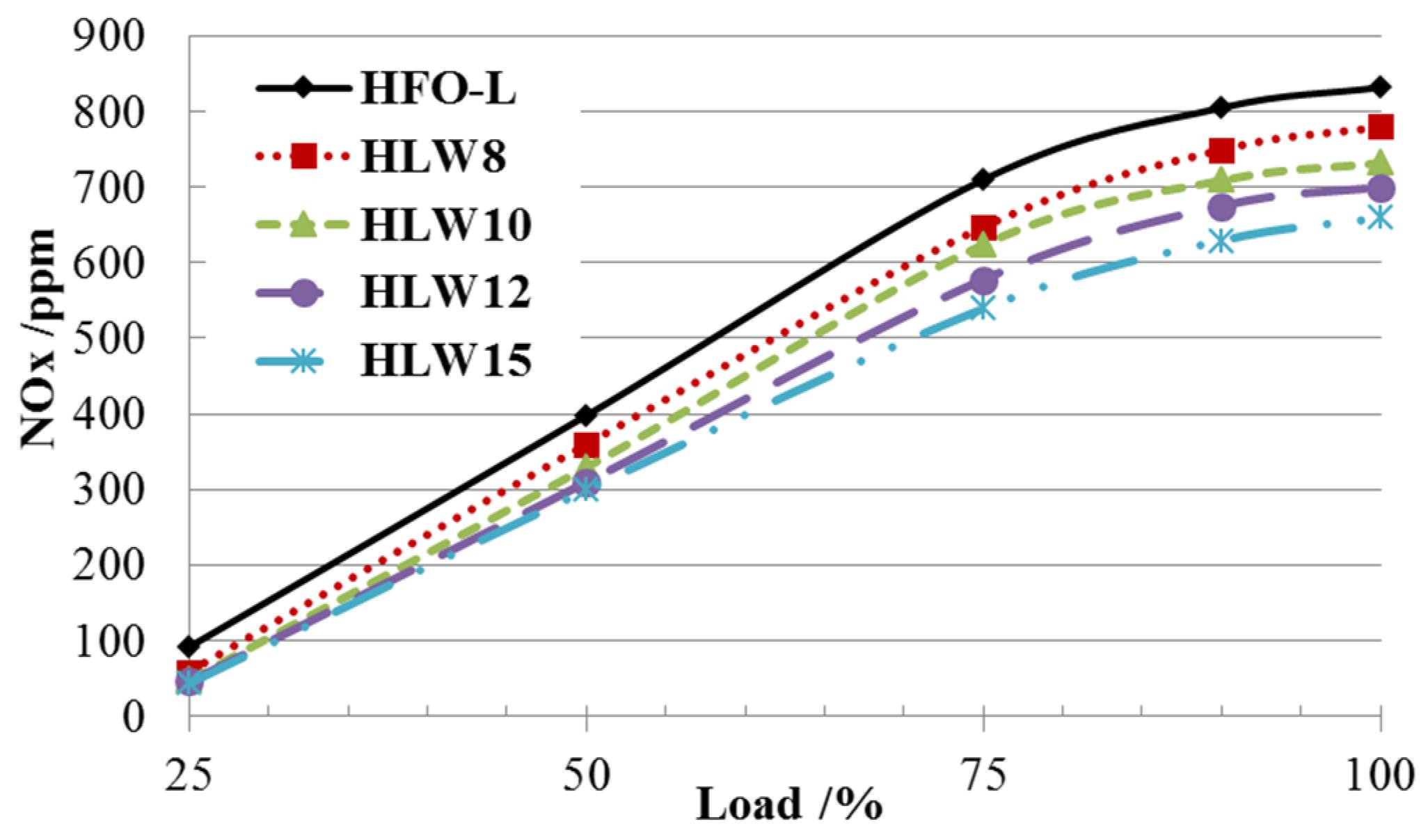
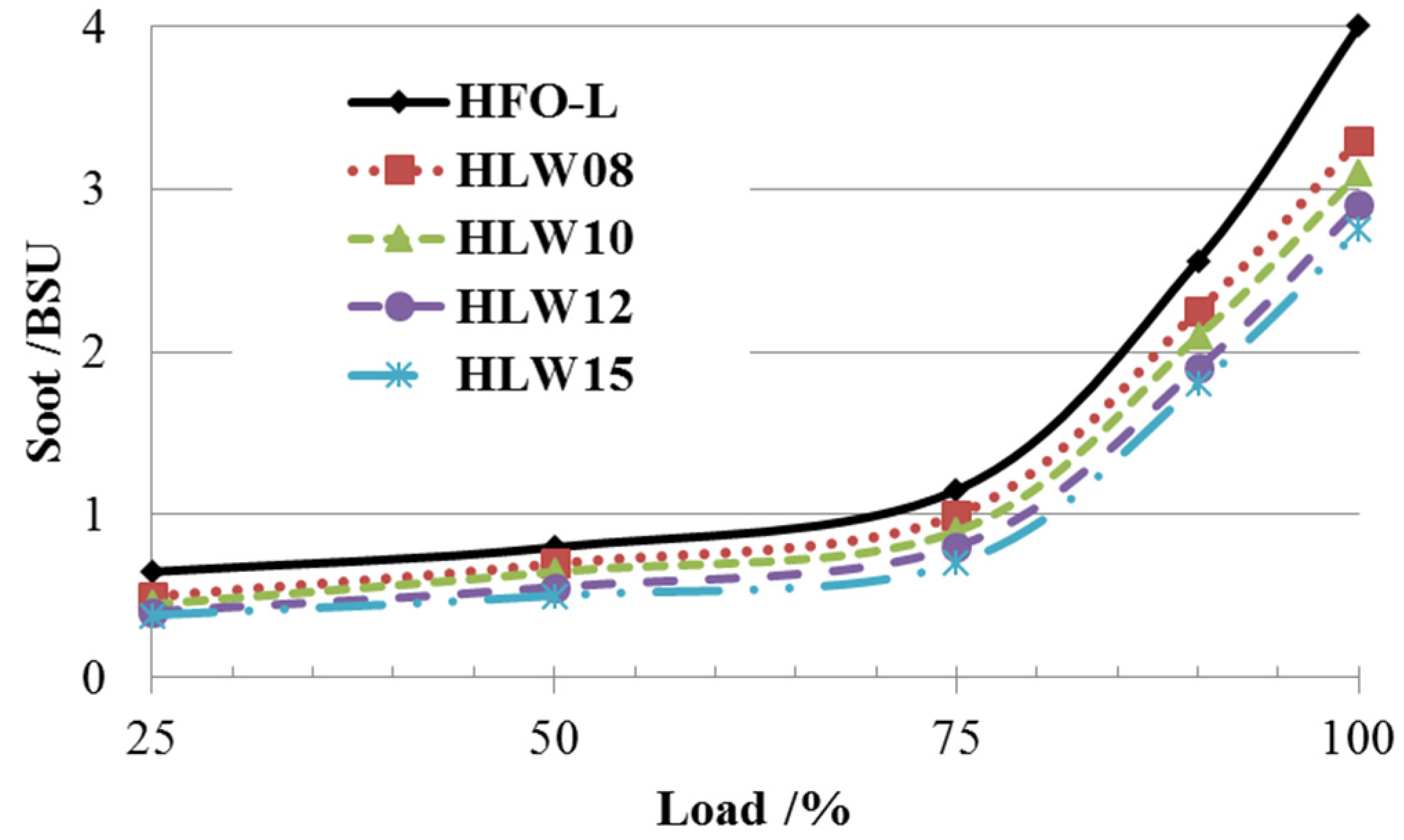
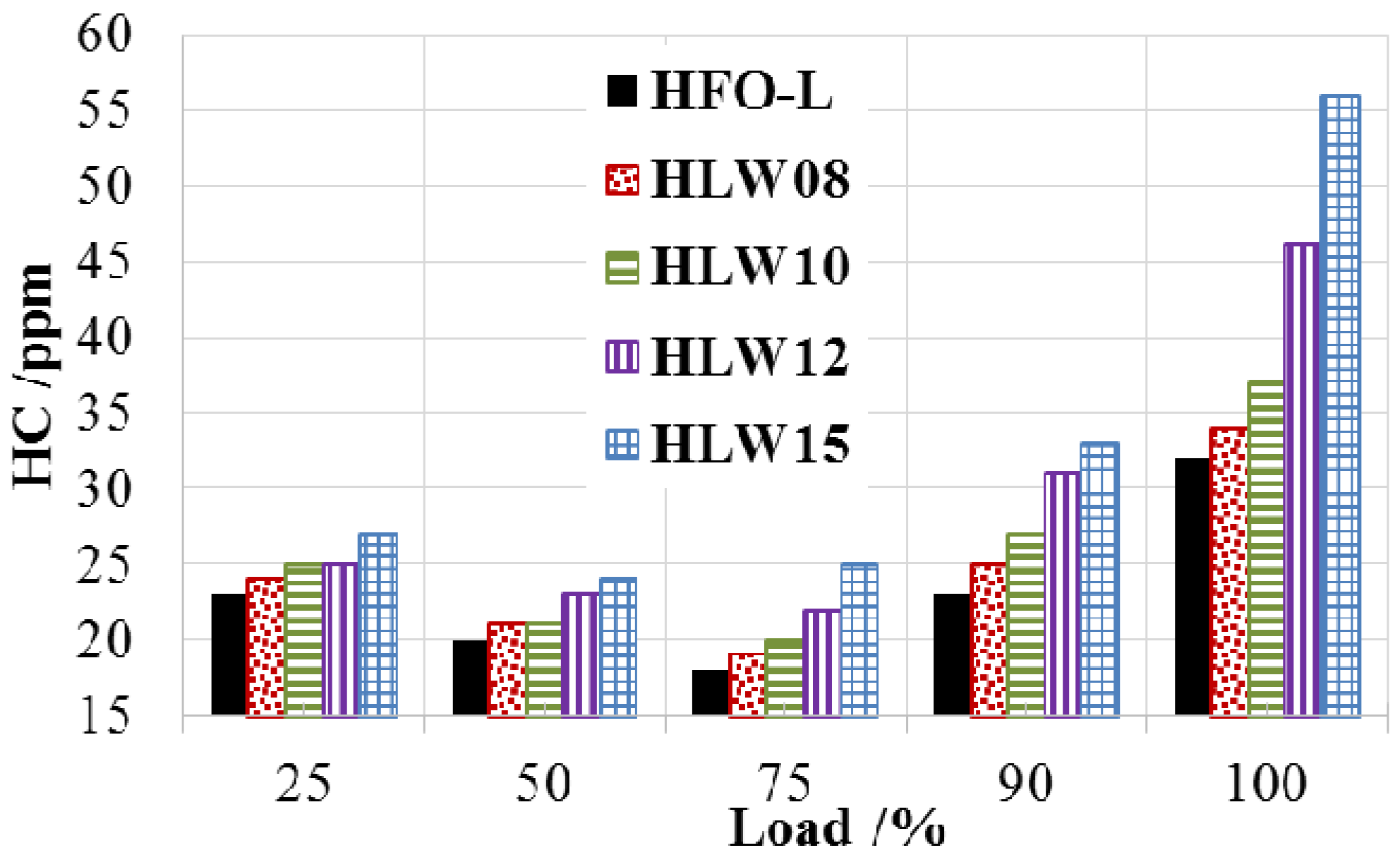
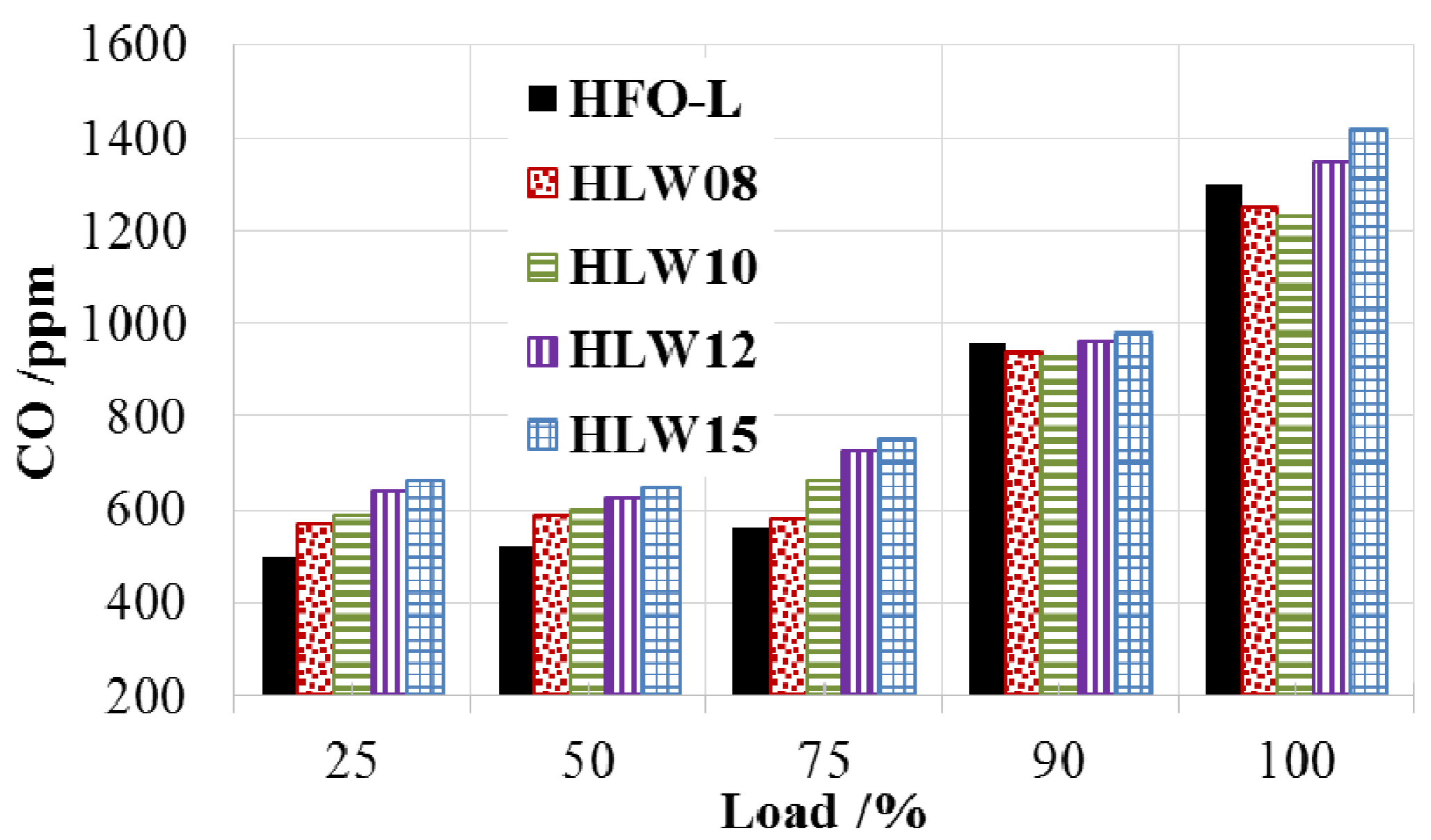
3.3. Summary of the Engine Performance Improvement Strategy
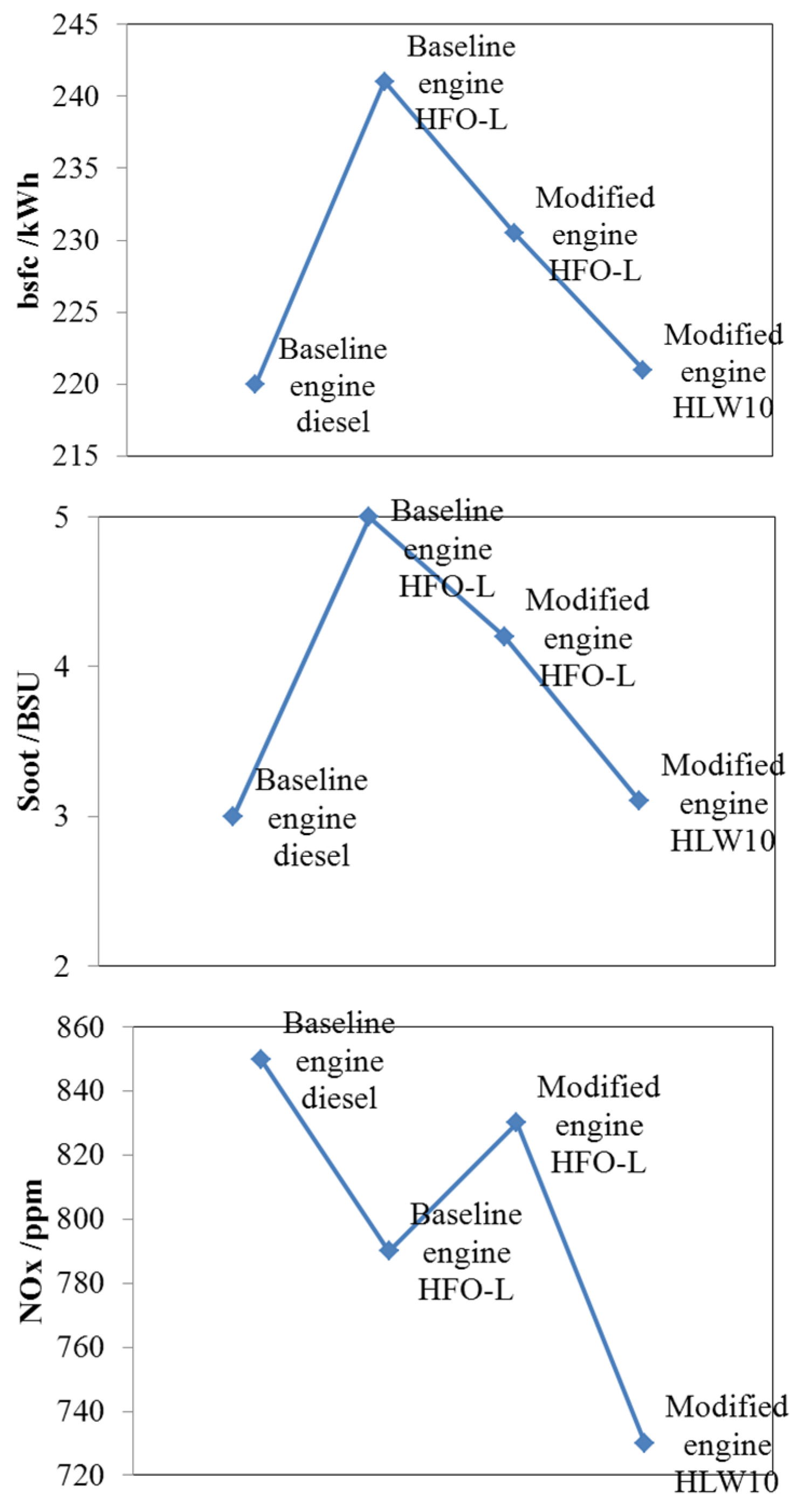
4. Conclusions
- (1)
- Using HFO and light diesel blend (HFO-L) in a high-speed diesel is a feasible way to reduce the running costs of the engine. In order to ensure the engine’s reliability and maintain its power performance and fuel economy, modifications to the combustion system and fuel injection system are necessary. This research proved the validation of the modifications of the combustion chamber and fuel injector of the engine to adapt HFO-L.
- (2)
- Use of HFO must result in higher soot emission compared with the use of light diesel. This problem can be solved by using emulsified fuel. When using water emulsified HFO-L, the soot emissions are greatly reduced compared with HFO-L. Meanwhile, water emulsification leads to lower NOx emissions. The positive change of soot and NOx emissions is very attractive for engine users.
- (3)
- Moderate water emulsified fuel also leads to lower BSFC compared with the fuel without water emulsification. There is an optimal value of water content for emulsified fuel. In this research 10% of water emulsification presented the best performance.
- (4)
- With the combination of the modified injection system and combustion system and using water emulsified HFO (HLW10), the engine presents much better fuel economy, lower NOx emissions, and maintains the same power performance as the prototype engine which uses light diesel.
- (5)
- Later research will include the measurement of the fuel injection characteristics and auto-ignition characteristics of emulsified HFO-L, which should be very helpful for understanding the energy saving mechanism and harmful emission reduction.
Acknowledgments
Author Contributions
Conflicts of Interest
References
- Feng, L.Y.; Du, B.G.; Li, J.X.; Liu, X. Experimental Research and Numerical Simulation on Performance of Heavy Fuel Oil Medium Speed Diesel Engine. Chin. Intern. Combust. Engine Eng. 2012, 33, 75–81. (In Chinese) [Google Scholar]
- Air Emissions Legislation Review for Internal Combustion Engines; Wärtsilä Corporation: Vaasa, Finland, 2003.
- Sarvia, A.; Kilpinenb, P.; Zevenhovena, R. Emissions from large-scale medium-speed diesel engines: 3. Influence of direct water injection and common rail. Fuel Process. Technol. 2009, 90, 222–231. [Google Scholar] [CrossRef]
- Xu, F.; Wu, W.B.; Zhang, D.L.; Du, B.G.; Ma, F.J. The Application of Emulsified Fuel to 1135 Diesel Engine. Chin. Intern. Combust. Engine Eng. 2002, 6, 55–58. (In Chinese) [Google Scholar]
- Abu-Zaid, M. Performance of single cylinder, direct injection Diesel engine using water fuel emulsions. Energy Convers. Manag. 2004, 45, 697–705. [Google Scholar] [CrossRef]
- Armasa, O.; Ballesterosa, R.; Martosb, F.J.; Agudelo, J.R. Characterization of light duty Diesel engine pollutant emissions using water-emulsified fuel. Fuel 2005, 84, 1011–1018. [Google Scholar] [CrossRef]
- Nadeem, M.; Rangkuti, C.; Anuar, K.; Haq, M.R.U.; Tan, I.B.; Shah, S.S. Diesel engine performance and emission evaluation using emulsified fuels stabilized by conventional and gemini surfactants. Fuel 2006, 85, 2111–2119. [Google Scholar] [CrossRef]
- Alahmer, A.; Yamin, J.; Sakhrieh, A.; Hamdan, M.A. Engine performance using emulsified diesel fuel. Energy Convers. Manag. 2010, 51, 1708–1713. [Google Scholar] [CrossRef]
- Alahmer, A. Influence of using emulsified diesel fuel on the performance and pollutants emitted from diesel engine. Energy Convers. Manag. 2013, 73, 361–369. [Google Scholar] [CrossRef]
- Ithnin, A.M.; Ahmad, M.A.; Bakar, M.A.A.; Rajoob, S.; Yahya, W.J. Combustion performance and emission analysis of diesel engine fuelled with water-in-diesel emulsion fuel made from low-grade diesel fuel. Energy Convers. Manag. 2015, 90, 375–382. [Google Scholar] [CrossRef]
- Raheman, H.; Kumari, S. Combustion characteristics and emissions of a compression ignition engine using emulsified jatropha biodiesel blend. Biosyst. Eng. 2014, 123, 29–39. [Google Scholar] [CrossRef]
- Koc, A.B.; Abdullah, M. Performance and NOx emissions of a diesel engine fueled with biodiesel-diesel-water nanoemulsions. Fuel Process. Technol. 2013, 109, 70–77. [Google Scholar] [CrossRef]
- Kadota, T.; Yamasaki, H. Recent advances in the combustion of water fuel emulsion. Prog. Energy Combust. Sci. 2002, 28, 385–404. [Google Scholar] [CrossRef]
- Debnath, B.K.; Saha, U.K.; Sahoo, N. A comprehensive review on the application of emulsions as an alternative fuel for diesel engines. Renew. Sustain. Energy Rev. 2015, 42, 196–211. [Google Scholar] [CrossRef]
- Yoshimoto, Y. Performance of DI Diesel Engines Fueled by Water Emulsions with Equal Proportions of Gas Oil-Rapeseed Oil Blends and the Characteristics of the Combustion of Single Droplets. SAE Paper 2006-01-3364. In Proceedings of the Powertrain & Fluid Systems Conference and Exhibition, Toronto, ON, Canada, 2006.
- Attia, A.M.A.; Kulchitskiy, A.R. Influence of the structure of water-in-fuel emulsion on diesel engine performance. Fuel 2014, 116, 703–708. [Google Scholar] [CrossRef]
- Huo, M.; Lin, S.; Liu, H.; Lee, C.F. Study on the spray and combustion characteristics of water-emulsified diesel. Fuel 2014, 123, 218–229. [Google Scholar] [CrossRef]
- Tarlet, D.; Bellettre, J.; Tazerout, M.; Rahmouni, C. Prediction of micro-explosion delay of emulsified fuel droplets. Int. J. Therm. Sci. 2009, 48, 449–460. [Google Scholar] [CrossRef]
- Ocampo-barrera, R.; Villasenor, R.; Diego-marin, A. An experimental study of the effect of water content on combustion of heavy fuel oil/water emulsion droplets. Combust. Flame 2001, 126, 1845–1855. [Google Scholar] [CrossRef]
- Ballester, J.M.; Fueyo, N.; Dopazo, C. Combustion characteristics of heavy oil-water emulsions. Fuel 1996, 75, 695–705. [Google Scholar] [CrossRef]
- ISCapture User Guide. Available online: http://www.tucsen.com/Home/Product/download/dataid/3/id/19.html (accessed on 16 January 2015).
- Watanabe, H.; Okazaki, K. Visualization of secondary atomization in emulsified-fuel spray flow by shadow imaging. Proc. Combust. Inst. 2013, 34, 1651–1658. [Google Scholar] [CrossRef]
© 2015 by the authors; licensee MDPI, Basel, Switzerland. This article is an open access article distributed under the terms and conditions of the Creative Commons by Attribution (CC-BY) license (http://creativecommons.org/licenses/by/4.0/).
Share and Cite
Feng, L.; Du, B.; Tian, J.; Long, W.; Tang, B. Combustion Performance and Emission Characteristics of a Diesel Engine Using a Water-Emulsified Heavy Fuel Oil and Light Diesel Blend. Energies 2015, 8, 13628-13640. https://doi.org/10.3390/en81212387
Feng L, Du B, Tian J, Long W, Tang B. Combustion Performance and Emission Characteristics of a Diesel Engine Using a Water-Emulsified Heavy Fuel Oil and Light Diesel Blend. Energies. 2015; 8(12):13628-13640. https://doi.org/10.3390/en81212387
Chicago/Turabian StyleFeng, Liyan, Baoguo Du, Jiangping Tian, Wuqiang Long, and Bin Tang. 2015. "Combustion Performance and Emission Characteristics of a Diesel Engine Using a Water-Emulsified Heavy Fuel Oil and Light Diesel Blend" Energies 8, no. 12: 13628-13640. https://doi.org/10.3390/en81212387







